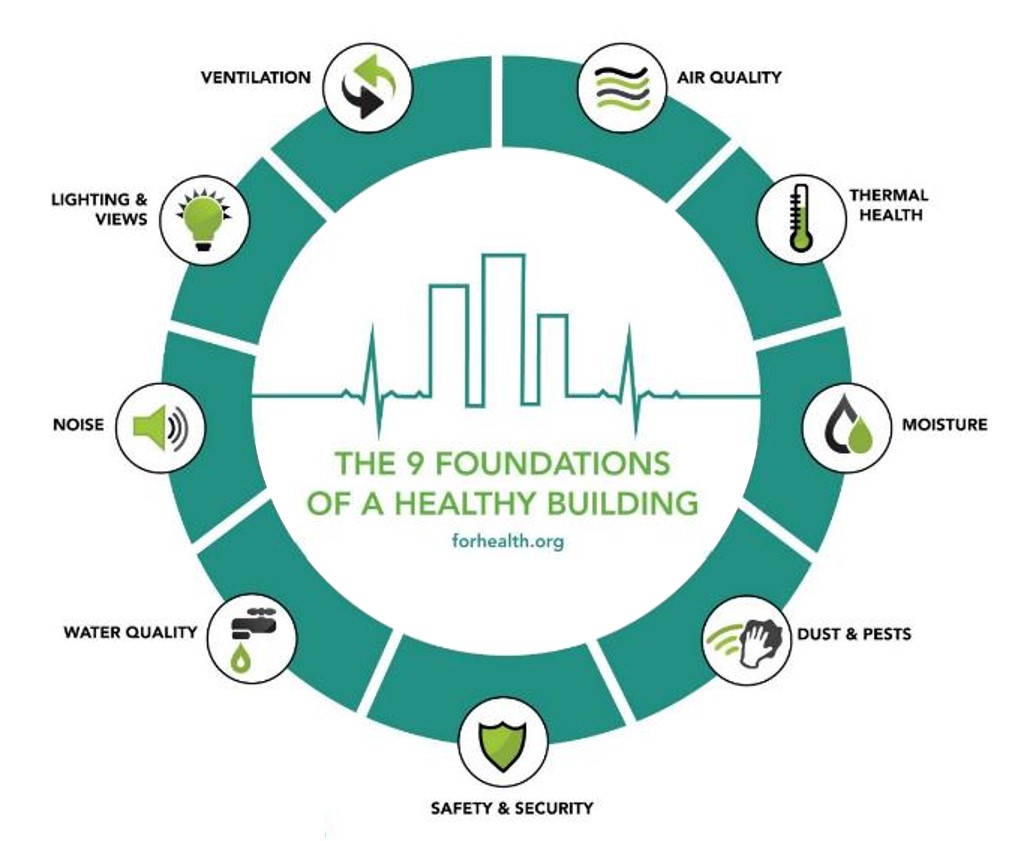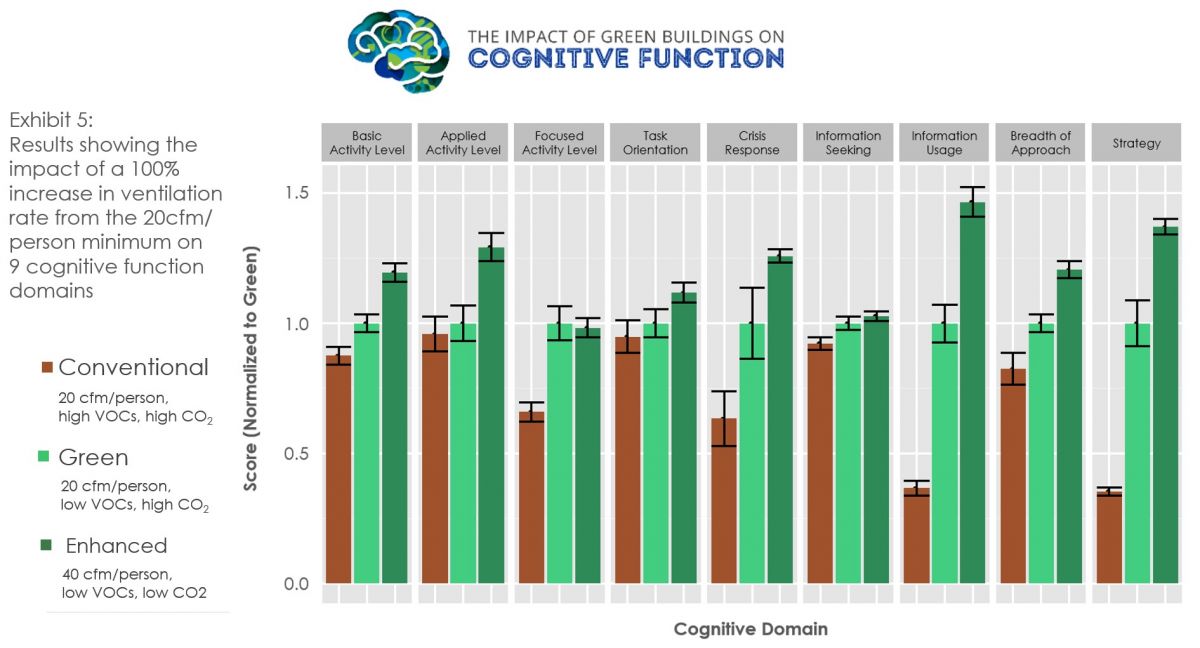Harvard Business School Senior Lecturer John D. Macomber says the book he co-authored with Harvard Assistant Professor Joseph G. Allen is aimed at making the business case for investing in healthy buildings. Here are some of the facts they present to make that argument.
Workers in an optimized indoor environment – high ventilation rates, low volatile organic compounds (VOCs) and carbon dioxide – showed dramatic improvements in cognitive function across nine categories, including focused activity level, task orientation and information usage. Experts estimate productivity gains between 2 and 10%.
Healthier buildings (focused again on higher ventilation rates) are associated with 1.6 fewer sick days per employee annually. For a company with 40 employees, Macomber and Allen estimate this results in a nearly 2% increase in net income.
The Lawrence Berkeley National Lab estimates there would be $20 billion in benefits to the U.S. economy if only three of nine healthy building strategies that Macomber and Allen lay out – improved ventilation, thermal health and mold/moisture control – were implemented.


Get our newsletter and digital focus reports

Stay current on learning and development trends, best practices, research, new products and technologies, case studies and much more.

